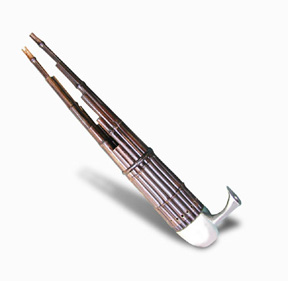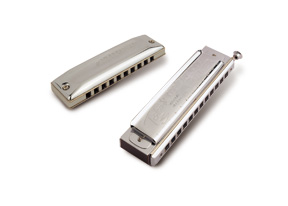About Harmonicaausge_hqhk2015-08-28T20:50:47+00:00
About Harmonica
Brief Introduction of Harmonica
Traits
- A harmonica or mouth harp is a wind instrument with multiple, variably-tuned brass or bronze reeds that can freely vibrate.
- It is placed between the lips and played by inhalation and exhalation.
- The varying notes available are played by moving the instrument to and fro on the lips.
- As it had fixed notes, no tuning was necessary.
Types
- There are two main types of harmonica – diatonic and chromatic.
- Basically, the diatonic harmonica is designed to produce the notes of the tonic chord of the key in which it is tuned by exhalation and the other notes of the diatonic scale by inhalation. On this type of instrument only the middle octave of the three-octave range is complete.
- The chromatic harmonica consists basically of two harmonicas in keys a semitone apart. It has a slide mechanism operated by a small hand-lever, which enables the player to change from one set to the other.
- The early type of chromatic instrument (10 holes, 40 reeds) was soon superseded by the 12-hole instrument of 48 reeds with three completed octave ranges.
- This type of instrument is now virtually standard, although a bigger model (16 holes, 64 reeds) with a range of four octaves is also available.
- Many other types of harmonica are designed for special purposes in group and band performance. These include bass and chord accompaniment instruments.
Left Hand Size: Diatonic Harmonica
Right Hand Size: Chromatic harmonica
History
- The introduction of the Chinese sheng into Europe in 1777 led to many experiments in the use of the reed.
- The harmonica appeared in Vienna in the mid-1820s. Although it is not known for certain who invented it, a possible candidate is Georg Anton Reinlein.
- Early harmonicas were hand-made, the wooden body-work carved and the reeds beaten from brass wire and fitted individually into the brass or bell metal reed-plates. Later a second reed-plate, which produced notes by sucking the air in, was added below the original one.
- One major production centre was set up in the small town of Trossingen (where the firm of Hohner was founded in 1857) in south-west Germany.
- As a result of industralization in the 1880s, harmonica became an instrument of mass production and was soon played in almost every country in the world. It reached its peak in the late 1920s when the German harmonica industry, which by then had gained a worldwide monopoly, was producing more than 50 million instruments a year.
- In the 1920s the chromatic harmonica was developed and was brought into prominence by Larry Adler in the late 1930s, followed later by Tommy Reilly. Despite the fact that serious works were written for it by composers such as Ralph Vaughan Williams and James Moody, the harmonica has never been widely accepted in the mainstream classical music field.

Chinese sheng





